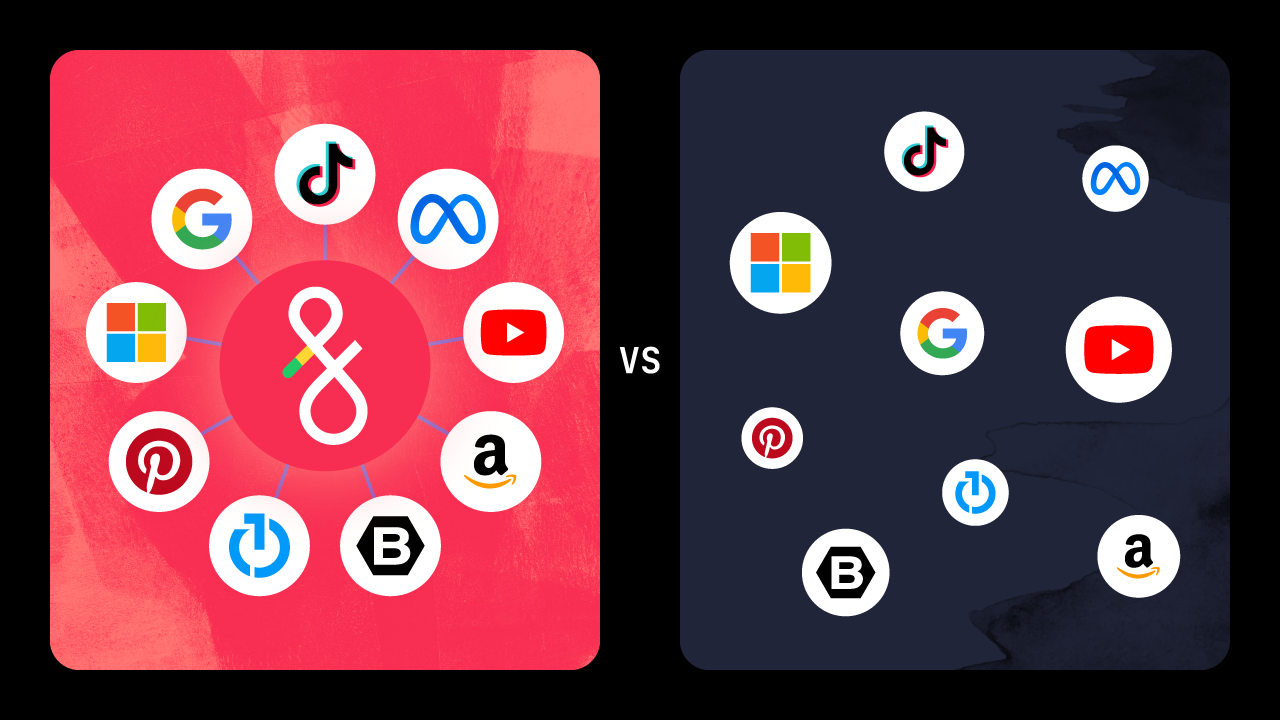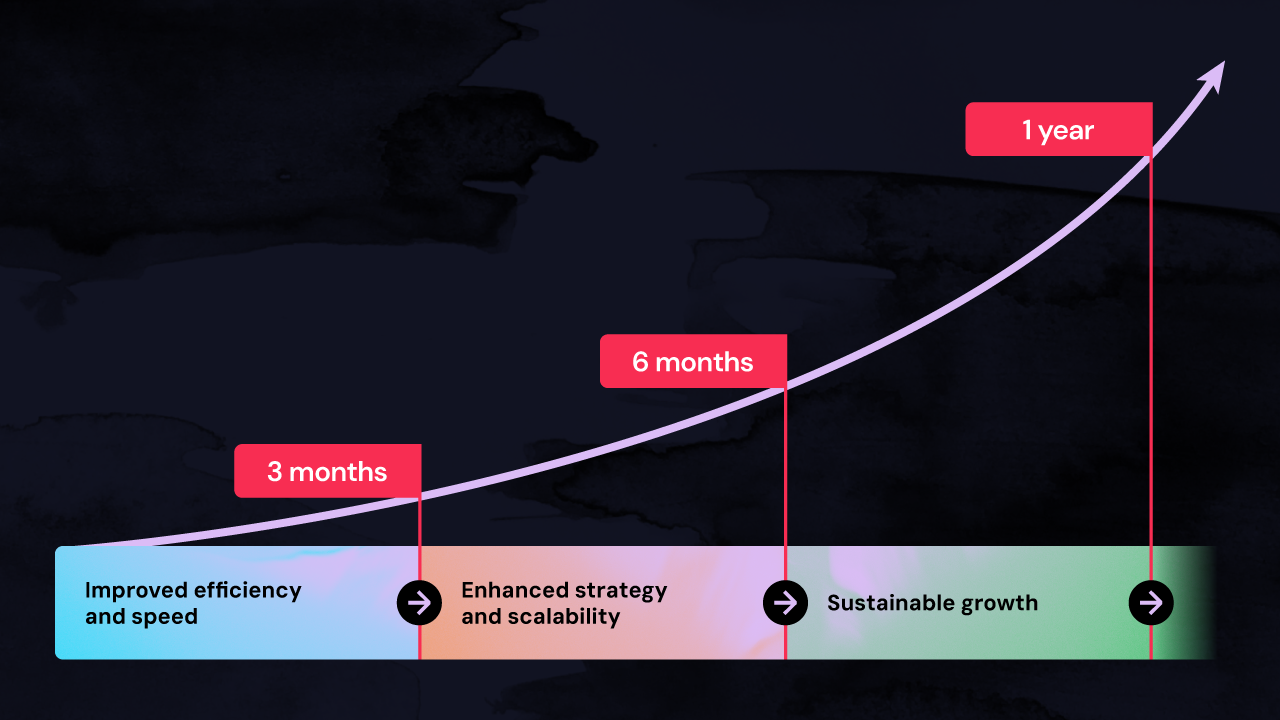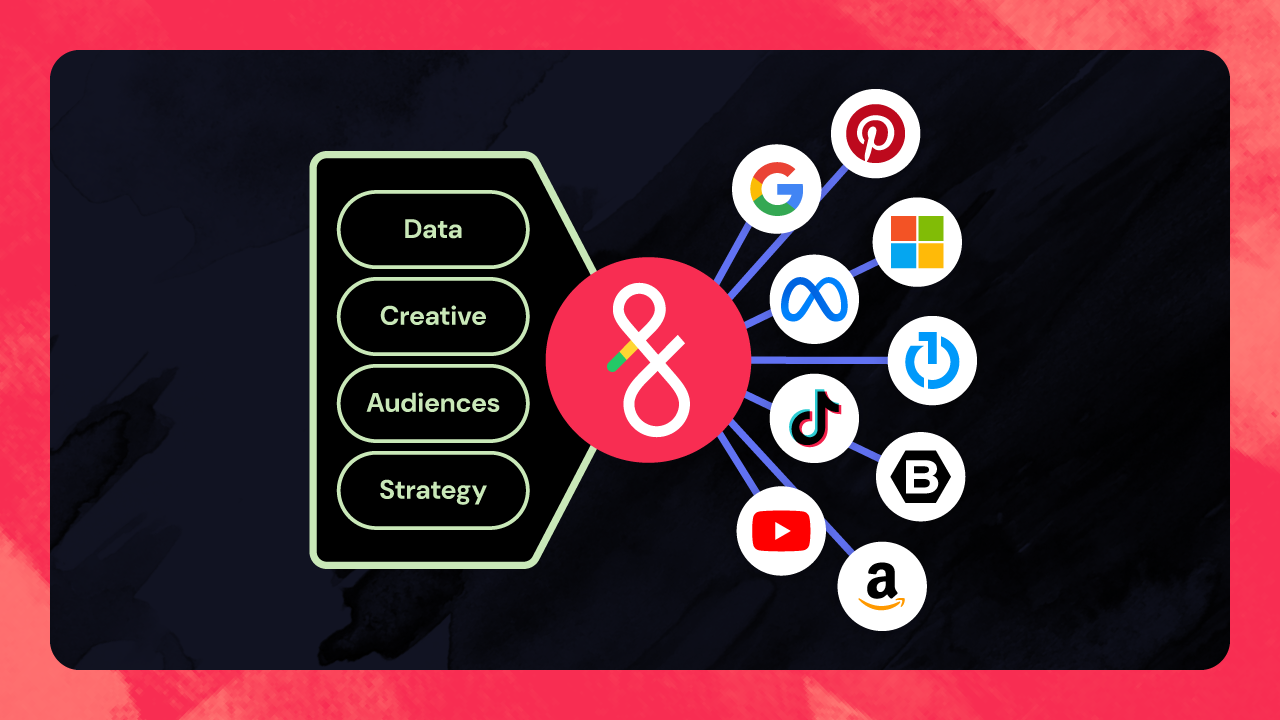Budget management is one of the most critical and complex workstreams in digital advertising. The unpredictable nature of market trends and ever-evolving consumer behavior makes it increasingly difficult to forecast which budgeting strategies will yield high returns. Given these multi-faceted challenges, it’s no surprise that budget management continues to pose significant challenges to advertisers, particularly at scale.
Advertising publishers haven’t made budget management easier for ad agencies, either. In fact, most publishers sap time and resources (particularly at scale) by forcing advertisers to manually adjust campaigns daily, even though customer budgets are set on a monthly cadence.
The result? Your agency runs a high risk of overspending or underspending. This leads to a high risk of poor business outcomes, including issuing credits or inaccurately forecasting revenue, plus the increased possibility of client or internal team turnover.
“The way things have always been done” doesn’t have to be how you continue to execute budgeting workflows. Tools like automation give you immense control of digital advertising budgeting processes, making it possible to optimize advertising budgets across your entire customer portfolio more efficiently and effectively.
If you’re tired of paying credits or leaving money on the table every month, take a look at how automation helps resolve some of the most frequent issues encountered in advertising budget management.
The impact of overspending and underspending ad budgets
Ad agencies walk a fine line when managing monthly customer budgets. Achieving 100% spend for every customer is nearly impossible with manual methods and workflows. There are simply too many factors, especially when you’re trying to reconcile budget spreadsheets with dynamic daily spend numbers across multiple channels.
Instead, you find yourself doing one of two things. When you overspend, you issue credits to your customers and decrease your agency’s revenue margins. When you underspend, you leave too much money on the table. In both cases, you’re jeopardizing customer relationships by not delivering on your customer’s stated objectives. Both underspending and overspending in advertising can have significant consequences for your business.
Both overspend and underspend open the door to churn and undermine your agency’s value propositions. At scale, these issues compound into a significant business risk. Agencies must find a way to balance customer budgets accurately across all channels for sustainable growth.
What causes underspend and overspend in digital advertising?
What are some common problems that cause overspending or underspending? Here are some common issues we see across multiple verticals, from legal and automotive to multi-family and beyond:
- Seasonality: Consumer behavior varies throughout the year. Holidays, weather, and other seasonal factors all impact why and when people make purchases. Aligning budgets to match these fluctuations can significantly enhance the effectiveness of advertising campaigns.
- Targeting and audiences: Campaign targeting settings, like geo-targeting, can help you get the most out of multi-location advertising budgets. However, if these settings are too restrictive, you could restrict ad reach and miss out on potential customers just outside a specified region. It's important to continuously reassess (and potentially widen) geo-targeting settings for optimal exposure.
- Operational challenges: Simply put, it is often too cumbersome to manage daily budgeting and pacing at scale using spreadsheets, manual adjustments, and cumbersome tracking reports. These time-consuming, monotonous tasks waste your team’s valuable skills and knowledge.
- Lack of clear reporting and insight: For agencies and strategists running high volumes of campaigns, it can be difficult to identify which accounts need attention. Strategists must log into individual publishers for notifications, making it hard to keep track of multiple channels simultaneously.
- Ad scheduling: Restricting ads to specific days or times could mean you’re potentially missing out on a segment of your target audience. More sophisticated consumer behavior data analyses can help determine the optimal times for serving ads and avoid any unnecessary confinement.
- Misconfigured budgets: Ad setting misconfigurations can lead to poor performance and inefficient budget use. For example, using the wrong bid strategy for your advertising goals (e.g. focusing on clicks when awareness is the goal) can lead to wasted ad spend. Regular reviews and adjustments based on campaign performance can help avoid such pitfalls and ensure your advertising budget is well-utilized.
Keep in mind that Facebook and Google use proprietary, publisher-specific algorithms to help you spend your budget efficiently. If you make significant budget changes or switch your bidding strategy to focus on conversions, the publisher may limit spending for a few days while the algorithm "learns.” These learning periods can impact a campaign’s overall performance.
7. Keywords are too limiting: Using the wrong keywords can attract irrelevant audiences, driving clicks that provide no return on investment. As these clicks accumulate, advertising costs increase while conversion rates and profits decrease. Choosing the right keywords ensures you target the right audiences. This reduces unnecessary expenses and maximizes the efficiency of the advertising budget.
Four automated budget management solutions for ad agencies
No matter the size or intricacy of your customer’s budget, automation enables advertisers to control strategies and budgets more effectively than ever.
Here are the four key budgeting management workstreams that automation can simplify and streamline:
1. Automate custom pacing strategies to align with specific KPIs
Automated pacing strategies The right automation platform will allow you to manage to the dollar AND to your specific KPIs, whether that be awareness, clicks, or other metrics. Some examples of pacing strategies include:
Strong finish: Hit sales goals by spending more in the later half of the month. This is particularly helpful when managing sales promotions around Black Friday or Christmas, as it enables teams to be more hands-off during the holidays without jeopardizing performance.
Metric-based: Set the key metric or goal you want to achieve. AI can learn from past performance to inform the right pacing mix, which is then automatically carried out by automation.
Weekends or Weekdays: Want to drive more traffic or conversions on certain days of the week? Automatically allocate more budget to weekdays or weekends to match customer spending patterns or market demands.
Front-loaded business week: Direct spending to the beginning of the business week, which is ideal for locations with strong early-week sales patterns.
Segmented: Break up your full monthly budget into dedicated allocations for specific time periods while still ensuring consistent pacing during the month.
…and more! No matter how you want to distribute your budget each month, you can automate budget pacing and save your team significant time. One of our agency customers saw a 90% reduction in budget pacing tasks after implementing automation!
2. Generate custom month-end reports in minutes
You’re delivering great value to your customers, but you shouldn’t spend hours creating custom reports to show it. Using an automation platform like Fluency enables you to synthesize data from every publisher (and other data sources) for a holistic look at performance. You can generate tailored performance reports in just a few clicks for every customer in your portfolio.
You can also utilize AI to reveal the most important need-to-know information every month, whether it’s related to a specific performance metric or multi-channel campaign strategy. Pairing AI with automation saves countless analysis hours and eliminates the need to manually synthesize downloaded CSV files from every channel.
3. Real-time notifications on critical performance issues
Automation systems like Fluency sync data from every publisher, channel, account, and campaign into one view. This makes it possible to receive critical notifications so teams can address critical issues in real-time, regardless of where they originate. Working from one view helps you identify specific areas of risk as well as prioritize where to focus.
Ben Gilbert is Senior Director of Advertising Innovation at Dealer.com, a Cox Automotive company. Gilbert’s team syncs specific notifications into a single dashboard that each team member views first thing in the morning. This enables them to address the most important issues—for every customer—right away.
“No longer do they have to hunt for something that's broken,” said Gilbert. “The dashboard tells them what needs attention or needs to be fixed in the first moment of the day.”
Gilbert says this gives the team hours back in their day to do “more strategic things or have more client conversations, which a lot of our reps just love doing,” instead of logging into different platforms and handling things on a one-off basis.
4. AI-generated budgeting recommendations and forecasting
AI-powered forecasting and spend projections can help your teams budget smarter, not harder. In-depth analysis of historical performance data empowers teams to adequately set budget strategies that incorporate past (or future) trends. Using predictable scenarios removes the guesswork for your team, allowing you to align budgets with key engagement periods.
For instance, if a campaign historically generates more leads on weekends, AI may suggest shifting spend to maximize performance on those peak days. Automated pacing monitoring can alert teams to risks like overspending or underperformance early so teams can take proactive action across campaigns or platforms. Using AI and automation for budget management, teams refine strategies, allocate budgets optimally, and achieve higher ROI with less effort.
See budget management automation in action
Brian McVey, Chief Revenue Officer at Fluency, elaborates on the multi-faceted benefits of budgeting automation in this short video. This video highlights how automation helps you:
- Mitigate both overspending and underspending, making it possible to consistently spend 99% (or more) of every customer budget
- Prioritize campaign performance over time-consuming budget management tasks, like adjusting spreadsheets instead of getting bogged down in the details of budget management
- Drive better business outcomes by freeing up more energy and time for strategic initiatives, creative content, and client relationships
Take control of your advertising budgets in 2025
If agencies are to make the most of their time and resources, they need a more strategic approach to managing digital advertising budgets in 2025. Automation can help by streamlining budgeting tasks, optimizing spend allocation across channels, and providing AI-driven forecasting recommendations that enhance decision-making.
Automation is unique in its ability to reduce manual workloads while maximizing ROI, ensuring that your agency can continue thriving even in a competitive landscape. You can also address growing complexities, like fluctuating market trends and consumer behavior, easier than you can with traditional or siloed tools.
One Fluency user at Click Here Digital, a leading advertising agency, stated: “Managing budgets in Fluency is much easier than what we were doing in a previous platform. That’s a resounding opinion—companywide at Click Here Digital—I find it incredibly easy.”
The time to adopt innovative, automated budgeting strategies is now. These solutions are essential for advertisers to remain agile and succeed in 2025 and beyond.

.avif)




